
Camarines Sur is a province located in the Bicol Region in Luzon of the Philippines. Its capital is Pili and the province borders Camarines Norte and Quezon to the northwest, and Albay to the south. To the east lies the island province of Catanduanes across the Maqueda Channel.

Tiwi,, is a 1st class municipality in the Province of Albay, Philippines. According to the 2015 census, it has a population of 53,120 people.
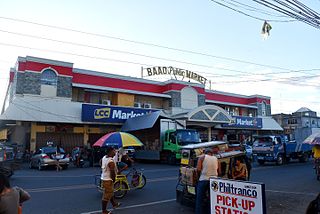
Baao,, officially the Municipality of Baao, is a 3rd class municipality in the province of Camarines Sur, Philippines. According to the 2015 census, it has a population of 58,849 people.

Bombon, officially the Municipality of Bombon, is a 5th class municipality in the province of Camarines Sur, Philippines. According to the 2015 census, it has a population of 16,512 people.
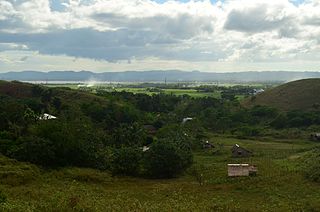
Bula,, officially the Municipality of Bula, is a 2nd class municipality in the province of Camarines Sur, Philippines. According to the 2015 census, it has a population of 69,430 people.

Calabanga, officially the Municipality of Calabanga, is a 1st class municipality in the province of Camarines Sur, Philippines. According to the 2015 census, it has a population of 83,033 people.
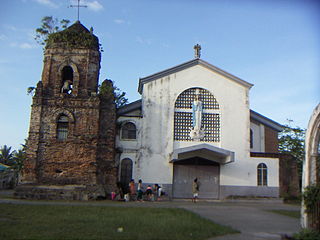
Canaman, officially the Municipality of Canaman, is a 4th class municipality in the province of Camarines Sur, Philippines. According to the 2015 census, it has a population of 34,210 people.

Caramoan, officially the Municipality of Caramoan, is a 2nd class municipality in the province of Camarines Sur, Philippines. According to the 2015 census, it has a population of 47,605 people.

Garchitorena, officially the Municipality of Garchitorena, is a 4th class municipality in the province of Camarines Sur, Philippines. According to the 2015 census, it has a population of 27,010 people.

Goa, officially the Municipality of Goa, is a 2nd class municipality in the province of Camarines Sur, Philippines. According to the 2015 census, it has a population of 63,308 people.

Lagonoy, officially the Municipality of Lagonoy, is a 2nd class municipality in the province of Camarines Sur, Philippines. According to the 2015 census, it has a population of 55,465 people.
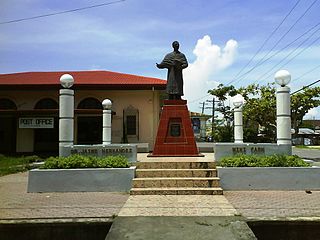
Libmanan, officially the Municipality of Libmanan, is a 1st class municipality in the province of Camarines Sur, Philippines. According to the 2015 census, it has a population of 108,716 people. The town is home to the Morales Ruins, a 1937 architectural Art Deco masterpiece in the heart of the historic town. The Art Deco building is reportedly designed by a Filipino national artist.

Lupi, officially the Municipality of Lupi, is a 3rd class municipality in the province of Camarines Sur, Philippines. According to the 2015 census, it has a population of 32,167 people.
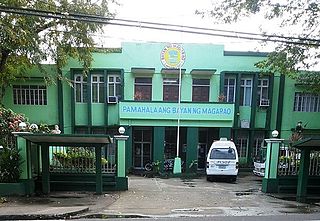
Magarao, officially the Municipality of Magarao, is a 4th class municipality in the province of Camarines Sur, Philippines. According to the 2015 census, it has a population of 25,694 people.

Pili, officially the Municipality of Pili,, Rinconada Bikol: Banwāan ka Pili, Tagalog: Bayan ng Pili) is a 1st class municipality and capital of the province of Camarines Sur, Philippines.
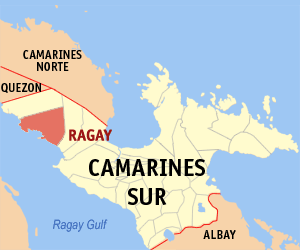
Ragay, officially the Municipality of Ragay, is a 1st class municipality in the province of Camarines Sur, Philippines. According to the 2015 census, it has a population of 58,214 people.
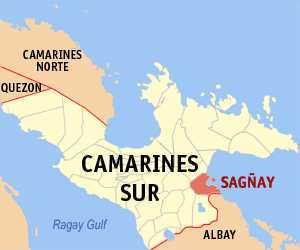
Sagñay, [ˈsaŋaj], officially the Municipality of Sagñay, is a 4th class municipality in the province of Camarines Sur, Philippines. According to the 2015 census, it has a population of 34,546 people.
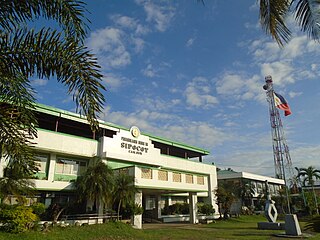
Sipocot, officially the Municipality of Sipocot, is a 1st class municipality in the province of Camarines Sur, Philippines. According to the 2015 census, it has a population of 64,855 people.

Siruma, officially the Municipality of Siruma, is a 4th class municipality in the province of Camarines Sur, Philippines. According to the 2015 census, it has a population of 17,764 people.

Tinambac, officially the Municipality of Tinambac, is a 1st class municipality in the province of Camarines Sur, Philippines. According to the 2015 census, it has a population of 67,572 people.






























